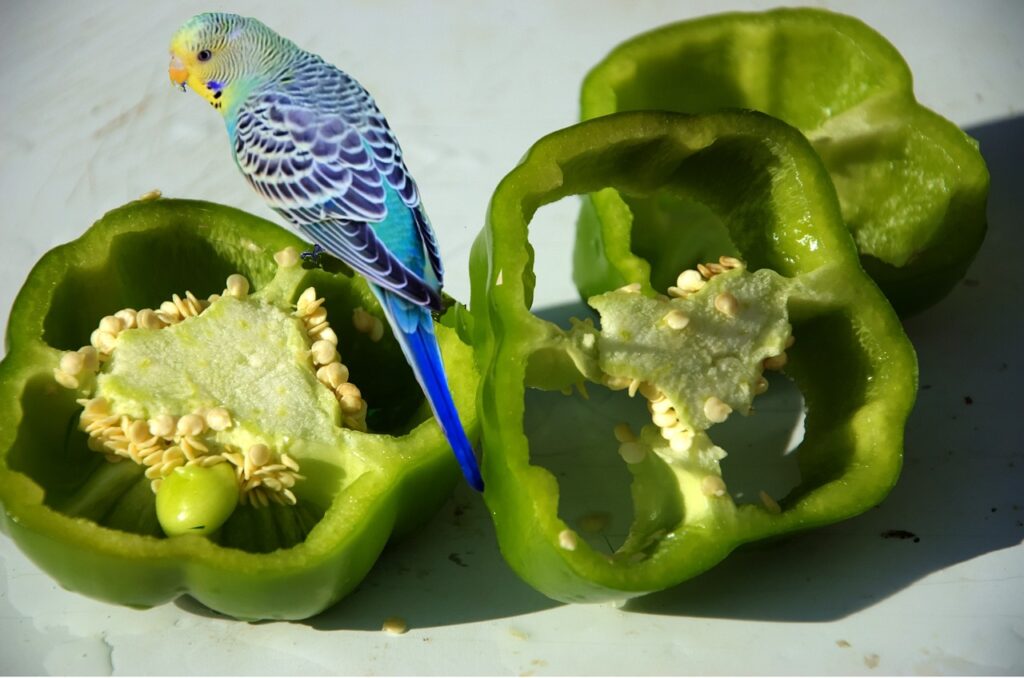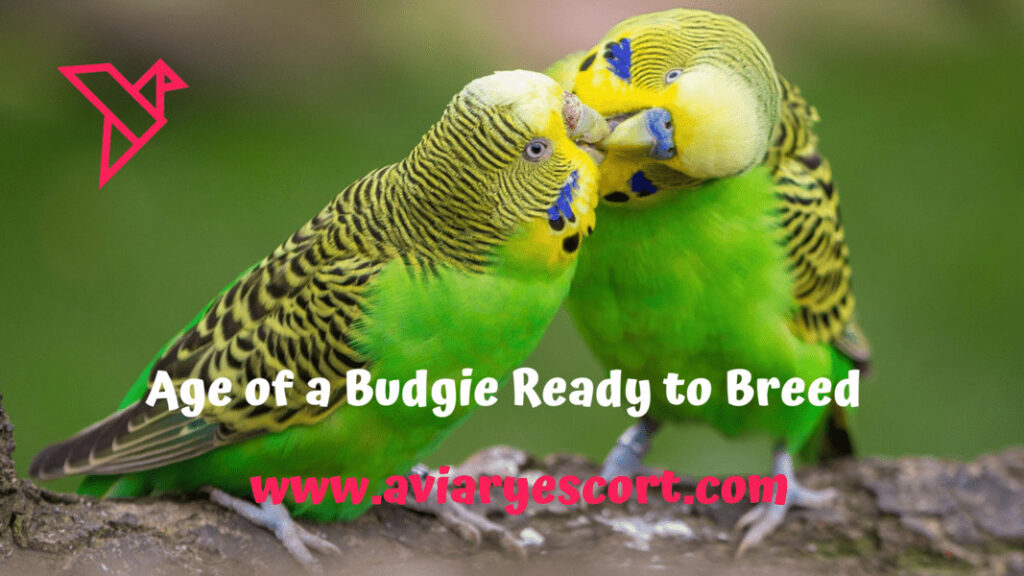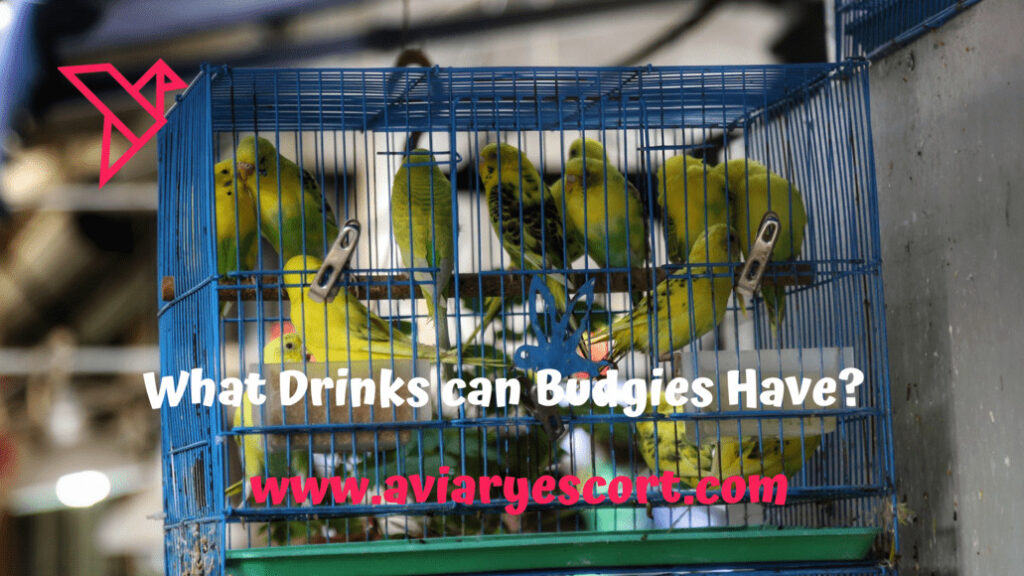In the realm of avian companionship, Budgies and Parakeets emerge as favored choices among pet enthusiasts. Budgerigars, commonly known as Budgies, hail from the Melopsittacus genus in Australia. Conversely, Parakeets encompass a diverse range of small to medium-sized parrot species, with Budgerigars representing just one variant among this group.
Understanding the nuances between Budgies and Parakeets is crucial for potential pet owners. Despite misconceptions about their differences, grasping their unique traits, behaviors, and care needs is vital.
This article navigates the distinctive characteristics, behaviors, housing, diet preferences, and more of Budgies and Parakeets. Readers will glean valuable insights, dispelling myths and uncovering the facets that set these captivating birds apart.
Budgies Overview
Scientifically classified as Melopsittacus undulatus, Budgerigars, commonly referred to as Budgies, are native to Australia. These charismatic birds have soared in popularity globally due to their vibrant plumage and engaging personalities.
1. Physical Characteristics
a) Size, Color Variations, Feather Patterns
Budgies typically measure around 7 inches in length. Their color variations span a spectrum of vibrant hues, including yellow, green, blue, and white, often adorned with mesmerizing patterns and intricate markings. Variations in color mutations have produced diverse feather patterns, captivating enthusiasts worldwide.

b) Unique Features
Budgies possess distinct physical attributes, such as the cere – a fleshy area above the beak that denotes gender, with a blue cere for males and a brownish color for females. Additionally, their graceful tail feathers contribute to their charm and elegance.
2. Behavioral Traits
a) Temperament, Sociability, and Intelligence
Budgies are renowned for their amiable nature and social tendencies. Their inherent intelligence allows them to bond deeply with their human companions, often exhibiting playful and curious behaviors.
b) Speech and Mimicry Abilities
Impressively, Budgies showcase remarkable speech and mimicry skills. They can mimic human words and sounds with astonishing accuracy, making them exceptional conversationalists and entertainers.
3. Housing and Care Requirements
a) Cage Size, Toys, Perches
Providing an adequate living space is crucial. A spacious cage with horizontal space for flying is recommended. Including a variety of toys and perches for mental stimulation and exercise is essential for their well-being.
b) Diet and Nutrition
Budgies thrive on a balanced diet consisting of high-quality seeds, fresh fruits, and vegetables. Ensuring a diverse and nutritious diet is vital for their health and longevity.
Parakeets Overview

1. Differentiating Parakeets from Budgies
Parakeets encompass a diverse group of small to medium-sized parrot species, among which the Budgerigar, commonly known as the Budgie, is just one variety. It’s important to note that not all Parakeets are Budgies, and vice versa.
2. Varieties and Species of Parakeets
Parakeets comprise a wide array of species, each with its unique characteristics and origins. There are almost 115 living species of parakeet out of which budgie/budgerigar is the most common.
Some most common types and their general characters are explained in the below chart:
| Parakeet Type | Size | Colors | Lifespan | Temperament | Special Traits |
|---|---|---|---|---|---|
| Budgerigar | Small | Various | 5-10 years | Sociable, Curious | Excellent mimics |
| Indian Ringneck | Medium | Various | 20-30 years | Intelligent, Vocal | Good talkers |
| Bourke’s Parakeet | Small-Medium | Rosy colors | 10-15 years | Gentle, Quiet | Quiet demeanor |
| Lineolated Parakeet | Small-Medium | Various | 10-15 years | Calm, Playful | Gentle and agile |
| Alexandrine Parakeet | Medium-Large | Green with red | 20-30 years | Affectionate, Talkative | Strong flyers |
| Lovebird | Small | Various | 10-15 years | Affectionate, Energetic | Bond closely |
| Pacific Parrotlet | Small | Various | 15-20 years | Confident, Playful | Feisty and curious |
| Canary-winged Parakeet | Small | Green with yellow | 15-20 years | Social, Active | Good at learning tricks |
| Plum-headed Parakeet | Small-Medium | Plum-colored head | 15-20 years | Gentle, Curious | Docile temperament |
| Monk Parakeet | Small-Medium | Green with gray | 15-20 years | Social, Intelligent | Build intricate nests |
Please note that these are general characteristics and individual birds may exhibit variations in behavior and temperament. Additionally, care, diet, and handling significantly influence a parakeet’s behavior and personality.
3. Physical Characteristics
Size, Color Variations, Distinguishing Marks Parakeets, in general, exhibit various sizes and colors, with a diverse range of markings and patterns. Their size and coloration may vary greatly depending on the specific species, showcasing a spectrum of hues and distinctive features.
Notable Differences from Budgies While some Parakeet species may share similarities in size and color with Budgies, notable differences exist in their physical characteristics, including distinct markings, beak shapes, and tail structures.
4. Behavioral Traits
Personality Traits, Bonding, and Social Behaviors Parakeets showcase a spectrum of personality traits, from outgoing and social to more reserved and independent. They exhibit strong bonding tendencies with their flock or human companions, showcasing various social behaviors within their groups.
Communication Abilities (Vocalizations, Mimicry) Communication among Parakeets involves vocalizations that vary between species, displaying unique calls and sounds. While some species exhibit impressive mimicry, not all Parakeets possess the same level of speech abilities as Budgies.
5. Housing and Care Requirements
Cage Setup, Environmental Needs Providing an appropriately sized cage with stimulating toys and perches is crucial for Parakeets’ physical and mental well-being. They require environmental enrichment and sufficient space for flying and exercising.
Diet and Nutritional Considerations Parakeets thrive on a diet comprising seeds, pellets, fresh fruits, and vegetables. Understanding their specific dietary needs based on species is essential for their health and longevity.
Budgie vs. Parakeet

1. Physical Differences
Size, Coloration, Feather Patterns Budgies typically measure around 7 inches in length, showcasing vibrant hues of yellow, green, blue, and white with intricate feather patterns. In contrast, Parakeets encompass various sizes and colors depending on the species, displaying a broader spectrum of color variations and markings.
Key Distinguishing Features Notable distinguishing features include Budgies’ compact size and specific color mutations, whereas Parakeets may vary significantly in size, with distinct markings, beak shapes, and tail structures based on their species.
2. Behavioral Differences
Temperament, Sociability, and Intelligence Comparisons Budgies are celebrated for their amiable and social nature, forming strong bonds with humans and showcasing high levels of intelligence. Parakeets, while also displaying varying degrees of sociability, may exhibit a wider range of temperaments based on their species, from outgoing and gregarious to more reserved and independent.
Speech and Mimicry Capabilities Contrasted Budgies are renowned for their exceptional speech and mimicry abilities, often displaying impressive skills in imitating human words and sounds. While some Parakeet species exhibit mimicry, not all possess the same level of speech capabilities as Budgies.
3. Housing and Care Variations
Cage Requirements, Toys, Perches Both Budgies and Parakeets benefit from spacious cages equipped with toys and perches for mental stimulation and physical exercise. However, the specific cage setup and environmental enrichment might vary based on individual species’ needs within the Parakeet category.
Differences in Dietary Needs and Preferences While both Budgies and Parakeets share similar dietary preferences, variations might exist among different Parakeet species, necessitating nuanced dietary considerations based on specific nutritional needs.
Budgie vs Parakeet Difference Chart
The term “parakeet” is a broad, encompassing category that includes various small to medium-sized parrots with long tail feathers. The budgerigar, often referred to as a “budgie,” is a specific species of parakeet. Here’s a comparison chart between the budgerigar (budgie) and other types of parakeets:
| Characteristic | Budgerigar (Budgie) | Other Parakeets |
|---|---|---|
| Species | Budgerigar | Various species |
| Size | Typically smaller (adults 18 cm) | Small to medium (18 to 45 cm) |
| Scientific Name | Melopsittacus undulatus | Varied species |
| Common Varieties | Various colors and patterns | Various colors and patterns |
| Lifespan | 5-10 years | Varies (5-30+ years) |
| Vocalization | Excellent mimicry ability | Varies in talking ability |
| Temperament | Sociable, Curious | Variable temperament |
| Popularity | Widely kept as a pet | Different species popular as pets |
| Availability | Commonly available | Some species less common |
| Price Range | $10 to $50 | Prices vary based on species |
They are the third most popular pets in the world behind cats and dogs. According to statista, the number of birds owned as a pet in the United States in 2017 was 20.6 million.
Should I get Budgies Or Parakeets?
When deciding between Budgies and Parakeets as potential avian companions, several crucial factors warrant consideration.
1. Lifestyle and Living Space Considerations
The available living space and lifestyle factors significantly influence the choice between Budgies and Parakeets. Budgies, known for their social nature, require adequate space to fly and interact. Consider the roominess of the living environment, as Budgies thrive in spaces that allow for free movement and exploration. Conversely, specific Parakeet species might have differing space requirements, necessitating consideration for cage size and environmental needs based on the selected species.
2. Personal Preferences and Interactions
Personal preferences regarding interactions with a pet bird play a pivotal role in decision-making. Budgies are renowned for their sociable and talkative nature, often bonding deeply with their human companions. Consider which personality traits align best with your preferences, whether it’s the engaging conversational skills of Budgies or the varied temperaments of different Parakeet species.
3. Maintenance and Care Requirements
Assessing the maintenance and care requirements of Budgies and Parakeets is crucial. While both share similarities in dietary preferences and cage setup, nuances exist in their specific needs. Budgies, for instance, might require a particular focus on speech training and mental stimulation. Parakeet species may differ in dietary preferences or behavioral characteristics, influencing daily care routines.
4. Compatibility with Other Pets or Family Members
Considering the compatibility of Budgies or Parakeets with other pets or family members is essential. Budgies, due to their social nature, might integrate well into households with active interaction. Conversely, evaluating the temperament and social behaviors of specific Parakeet species becomes crucial when considering their compatibility within a multi-pet or family environment.
By carefully assessing these factors, prospective pet owners can make an informed decision that aligns with their lifestyle, preferences, and the well-being of their potential avian companions, whether choosing Budgies or specific Parakeet species.
Common Misconceptions Clarified
Addressing misconceptions is crucial in understanding the nuances between Budgies and Parakeets.
1. Confusion Regarding Terminology (Budgies vs. Parakeets)
There exists a prevalent confusion surrounding the terminology of “Budgies” and “Parakeets.” It’s important to clarify that Budgies are, in fact, a specific type of Parakeet. The term “Parakeets” encompasses a diverse group of small to medium-sized parrot species, among which the Budgerigar (Budgie) is just one variety. Understanding that Budgies are a subset of Parakeets helps in distinguishing between the broader category and the specific species.
2. Debunking Myths about Behavior or Care Similarities
Several myths exist about the behavior and care similarities between Budgies and Parakeets. It’s essential to dispel these misconceptions to gain a clearer understanding. While they may share some characteristics, such as sociability, not all Parakeet species exhibit the same behaviors as Budgies. Each species within the Parakeet category can display diverse temperaments, speech abilities, and social behaviors, dispelling the notion of uniformity in behavior and care requirements.
3. Clarifying Differences Based on Scientific Classification
Scientific classification plays a pivotal role in understanding the differences between Budgies and Parakeets. It’s crucial to emphasize that Budgies belong to the broader category of Parakeets based on taxonomical classification. This classification helps in comprehending their evolutionary lineage and biological distinctions, clarifying that Budgies are a specific type of Parakeet rather than separate entities.
Pros and Cons of Budgies and Parakeets
When considering Budgies or Parakeets as potential pets, it’s important to weigh their advantages and drawbacks to make an informed decision.
Advantages of Owning Budgies

Sociable and Engaging: Budgies are renowned for their sociable and interactive nature, often forming strong bonds with their human companions.
Exceptional Speech Abilities: They exhibit remarkable speech and mimicry skills, delighting owners with their ability to imitate words and sounds.
Ease of Training: Budgies are generally receptive to training, making them suitable for learning various tricks and behaviors.
Advantages of Owning Parakeets

Species Diversity: Parakeets encompass a wide variety of species, each offering unique traits, colors, and personalities, providing a diverse selection for prospective owners.
Varied Temperaments: Different Parakeet species display varying temperaments, from outgoing and playful to more reserved and independent, catering to diverse preferences.
Potential for Mimicry: While not all Parakeet species possess speech abilities akin to Budgies, some may exhibit impressive mimicry and vocalizations.
Drawbacks or Challenges of Each Species
Budgies
Noise Levels: Budgies can be noisy, especially when they’re vocalizing or engaging in their playful antics, which might not suit everyone’s living situation.
Attention Needs: Their sociable nature requires regular interaction and mental stimulation, necessitating commitment from owners to provide adequate attention.
Parakeets
Varied Behaviors: Certain Parakeet species might have temperaments that require understanding and patience, as some may be more reserved or independent.
Speech Abilities: While some Parakeet species may exhibit mimicry, not all possess the same speech capabilities as Budgies, which might be a consideration for those seeking a talking companion.
Keeping Budgies and Parakeets Together
Keeping Budgies and Parakeets together requires careful consideration due to their differences in behavior and temperament.
1. Understanding Compatibility
Social Dynamics: Budgies are social birds and often thrive in the company of their own kind. Introducing a Parakeet to a Budgie’s environment might require gradual and supervised interaction to ensure compatibility.
Species Interaction: While some owners successfully house Budgies and Parakeets together, individual personalities and the specific species of Parakeet play a crucial role. Some Parakeet species may exhibit more assertive or territorial behavior that could affect the harmony within the shared environment.
2. Observation and Supervision
Initial Introduction: Introduce the birds in a neutral space, observing their interactions closely. Gradually increase the time they spend together while monitoring for signs of aggression or stress.
Separate Cages Initially: Provide separate cages to allow each bird to retreat if needed. This helps reduce potential conflicts during the adjustment period.
3. Monitoring and Environmental Considerations
Behavioral Cues: Pay attention to body language and vocalizations. Aggression, stress, or signs of discomfort should prompt immediate separation.
Environmental Setup: Offer multiple feeding stations, perches, and toys to minimize competition and territorial disputes. Adequate space and resources are crucial for maintaining a peaceful cohabitation.
4. Considering Individual Needs
Observing Interactions: Some Budgies and Parakeets might form strong bonds, while others may prefer their own species for companionship. Respect their preferences and ensure they each have opportunities for social interaction and mental stimulation.
Separation if Necessary: If persistent conflicts arise, consider separate housing arrangements to ensure the well-being of both birds.
Frequently Asked Questions
1. Are all Parakeets considered Budgies?
No, while Budgies are a type of Parakeet, not all Parakeets belong to the Budgerigar species.
2. Can Budgies and other Parakeets coexist?
Budgies can potentially coexist with other Parakeet species, but individual temperament and proper introduction are crucial factors.
3. What distinguishes Budgies from other Parakeets visually?
Budgies are commonly recognized by their compact size, vibrant green and yellow feathers, while other Parakeet species may vary greatly in size and coloration.
4. Are Budgies and Parakeets equally trainable?
Budgies are renowned for their trainability and social nature, but individual Parakeet species might exhibit different levels of trainability.
5. Can Budgies and Parakeets interbreed?
Generally, interbreeding between Budgies and other Parakeet species is not natural due to genetic differences.
Read more! English Budgies | English Budgie vs American Budgie












